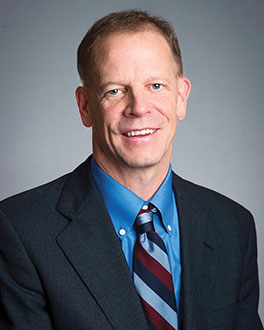By 2030, all Medicare beneficiaries will be in some type of accountable care relationship—Medicare Advantage (MA), accountable care organizations (ACOs), or other model. While these models are traditionally driven by health plans, hospitals, and physicians, more and more long term care providers are taking advantage of population health, which puts them in the driver’s seat as the provider and entity best suited to care and be accountable for the health and outcomes of their residents.
 Providers are steadily moving to population health models of care that address individuals’ whole-person needs at all points along the continuum of care, including in the community setting, through participation, engagement, and targeted interventions for a defined population. There are different paths to participation in population health; one is through launching a special needs plan (SNP), a type of MA plan.
Providers are steadily moving to population health models of care that address individuals’ whole-person needs at all points along the continuum of care, including in the community setting, through participation, engagement, and targeted interventions for a defined population. There are different paths to participation in population health; one is through launching a special needs plan (SNP), a type of MA plan.
By becoming their own MA organizations, providers have greater flexibility in the Medicare program, which ensures the right care is delivered at the right time in the right setting and helps reduce potentially avoidable hospitalizations.
Step 1: Consider What Risk You Are Willing to Take
Shelby Barnes, MSN, ARNP, FNP-BC, nurse consultant at HealthCARE of Iowa, guided her organization’s implementation of an institutional special needs plan (I-SNP), which launched January 1, 2023.
HealthCARE of Iowa began by considering what risk it was willing to take on as a provider, i.e., independent owner, or whether it made more sense to have an experienced SNP partner that would have more overall involvement.
“We didn’t have the numbers to do it ourselves, so we worked with a partner organization and determined they would have more of a role in assuming the risk,” Barnes said.
Meanwhile, she asked as many questions of as many people in the field as she could. Among those questions:
- What amount of risk will we shoulder?
- What amount of responsibility do we take on as an organization?
- What level of responsibility do the individual facilities have?
- What support do you provide?
- How long does this process take to implement from conception to initiation of the plan?
Ted LeNeave, chief executive officer of Accura HealthCare, said obtaining an education, such as attending AHCA’s Population Health Management Summit or reading whatever you can about I-SNPs, is a great way to start. “Talking to other I-SNP owners about their experiences helps one understand what to expect at all levels of the implementation and ongoing process,” he said.
Barnes said, “There is a lot that goes into starting your own I-SNP, and we realized that, for us, the best option was to work with a reputable organization. This partner organization made sense, as they are not only insurance providers, but they have their own nursing homes and understand our unique needs and challenges.”
Step 2: Educate Stakeholders and Staff
Barnes then spoke to executives, senior leaders, and directors of nursing to explain where the population health and accountable care movements were going and what options they had to help them get there.
“Our partner did a lot of the heavy lifting for us,” Barnes said. “They did all the work to gain network adequacy in the targeted counties for 2023. They are continuing to work toward expanding into more counties in Iowa to gain the network adequacy needed for 2024. They contacted all the outside hospitals, clinics, and provider groups, which lifted a huge burden off the provider owners.”
The partner organization also does the back-office operations management for the I-SNP plan, including hiring all the needed staff to operate the plan successfully in Iowa. HealthCARE of Iowa provides consulting to about 1,000 skilled nursing facility beds and 1,000 assisted living and independent living beds.
Step 3: Get Buy-In
To get buy-in into the program, it is crucial to explain it at a high level and to emphasize all the benefits for residents.
“Focus on the quality of care they will receive, not only from our staff but also from the health plan,” Barnes said. “Explain how the health plan provides added staff to help drive quality outcomes. These new staff members become a part of our team, working together toward a common goal.”
Any stakeholders in the resident care arena—including the billing department, clinical staff, primary care providers, operations, residents, and families—must be kept abreast of the program’s progress.
“It’s important to explain that not all I-SNPs are created the same, and they don’t all function the same way.” Barnes held meetings to discuss the different population health models emerging into the space and the differences between them, and how this approach isn’t a one-size-fits-all solution.
LeNeave said the proof of increased quality of care and life is the recipe for buy-in from everyone who will be impacted by transitioning to an I-SNP.
“We simply shared outcomes, both clinical and financial, to our operators and community care providers,” he said. “The messaging was simple: better quality for residents, created by better communication and services because of a broader integrated care market where all providers have to work together and are not in their own silos.”
Step 4: Promote the Program’s Positives
Having an increased or added burden was also a concern for both primary care providers and other staff, Barnes said.
“This was alleviated by open communication and by explaining that the I-SNP provides extra staff, on top of the care already provided, and the roles that the I-SNP can assist with as far as coordination or family notification in change in condition or order changes.
“This is an easy sell to the families because it doesn’t change or stop any of their existing care; it only adds more people focused on their loved one,” Barnes said.
Barnes said the I-SNP model of care allows her organization to provide a higher level of care in areas that previously had barriers, such as rural areas with limited access to advanced practice providers, or where care is being provided but isn’t well supported financially.
“This pulls both of those areas together. It helps break down the walls in the requirements for payment of service. It feels more like the payer and health care providers are working toward a common goal that is focused on the residents.”
Note: Not All Residents Will Participate

Not all residents would choose to enroll in the I-SNP, Barnes said, so she had to look at options through traditional Medicare to ensure all residents could participate in a value-based care arrangement. Under Medicare fee-for-service, there are ACO options for both short term and long term care residents.
“It’s important to understand that residents’ needs vary, and which accountable care options will work best for them depend on their length of stay, what care needs they have, and which payer they have,” Barnes said.
“This is why is it crucial to know who the payers are for your residents that can help determine which accountable care options would work best for your facility demographics.”
Paul Bergeron is a freelance writer based in Herndon, Va.